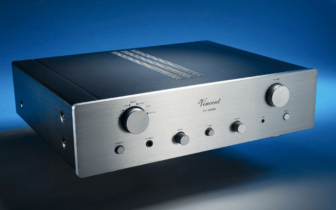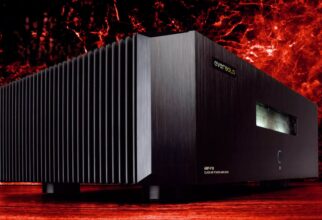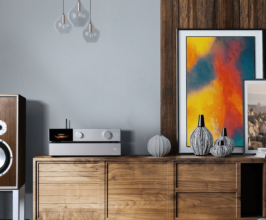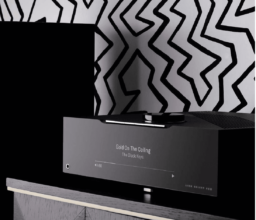Marantz Stereo 70s Review
All in one! That seems to be the motto of the new Marantz Stereo 70s. It is supposed to impress as a stereo amplifier and as a central component of a home entertainment system. Does the slim receiver manage to strike this balance?
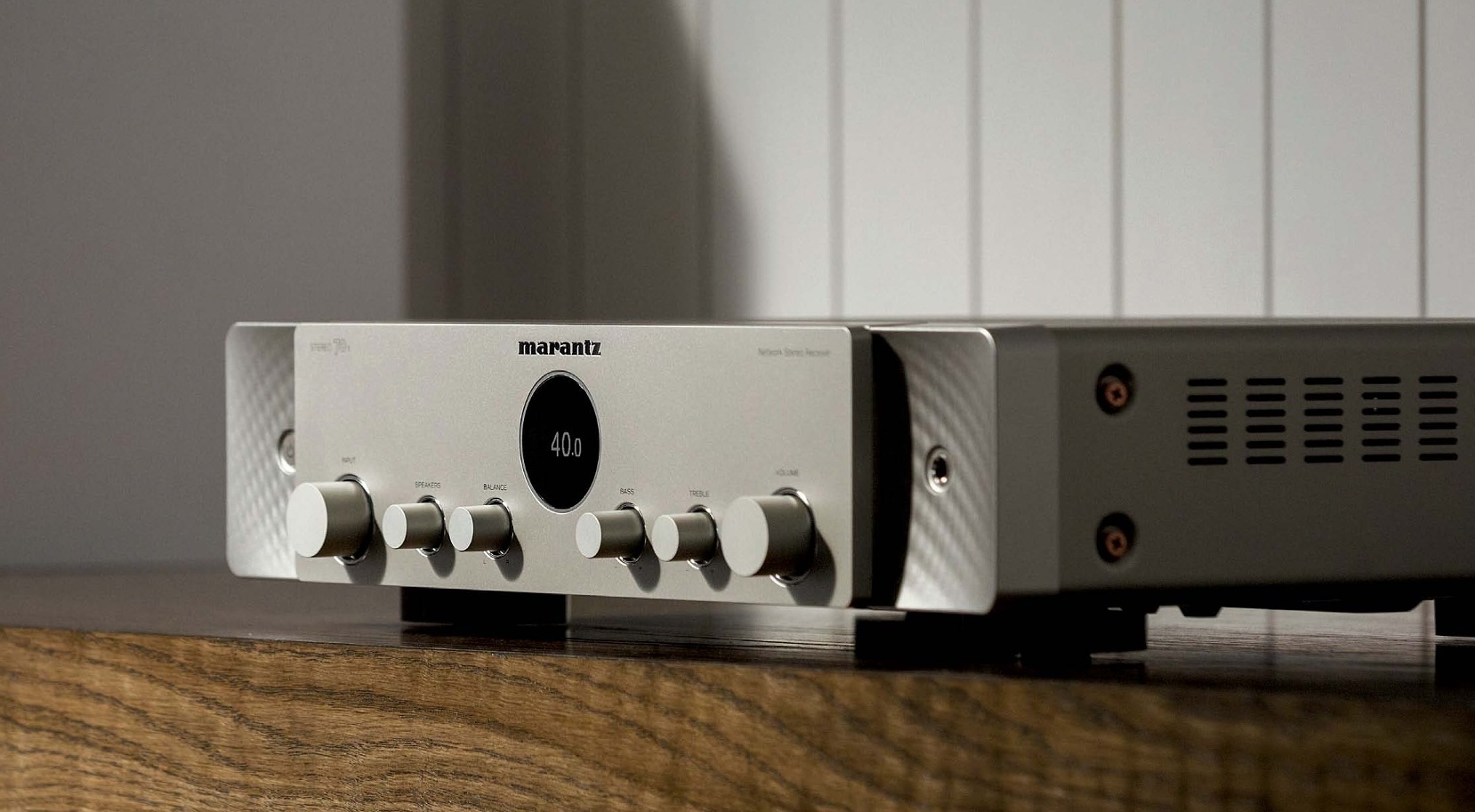
“Only those who follow their own path can never be overtaken,” said Marlon Brando. Marantz seems to follow this philosophy, as while other HiFi manufacturers like KEF or Klipsch focus on smart speakers to elegantly combine stereo and home theater applications, Marantz packs three essential features – HDMI, DAC, and Phono – into a hybrid amplifier-receiver.
We find this approach likable, because first, it offers music lovers more speaker options. Second, Marantz seems to be well aware of its roots – and those are not in the speaker segment.
Powerful Amplifier
Anyone who chooses the Stereo 70s will need – unlike with KEF or Klipsch – a pair of external speakers. To give customers as much freedom as possible, Marantz equipped this device with a fully discrete 120-watt amplifier (4 ohms) using A/B technology, all neatly housed in a finely crafted metal case. Home theater fans need not fear higher volume levels or powerful bass performances.
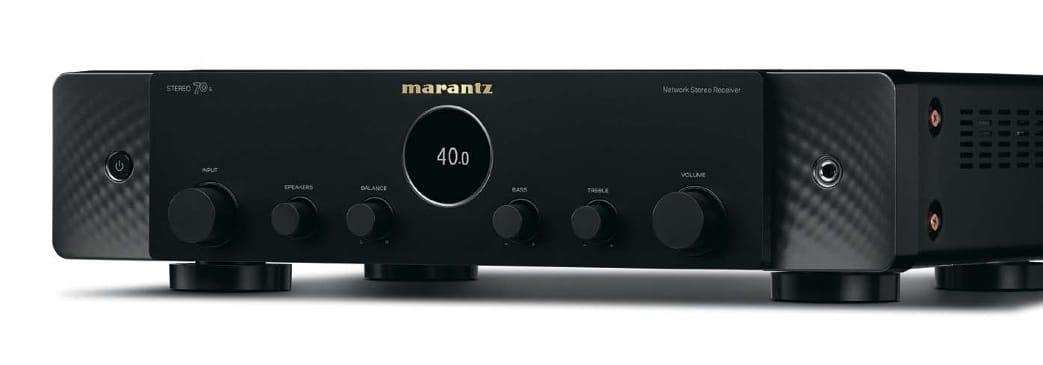
Our measurements confirm that this slimline device, available in champagne and black, won’t run out of steam too quickly. And if the Stereo 70s’ power is still not enough, you can connect an even more powerful amplifier via its pre-out.
Extensive Features
Let’s go back to the comparison with the currently popular smart speakers. The Marantz receiver offers much more flexibility and connectivity: it has six HDMI inputs on the back, three of which support 8K resolution for Ultra-HD TV images. You can connect Blu-ray players, gaming consoles, and more to these inputs. Additionally, there is an audio return channel for TV sound (ARC), optical/coaxial digital inputs, USB audio, Phono MM, a DAB/FM tuner, and three analog inputs. We should also mention two subwoofer outputs and a headphone jack.
In terms of audio streaming, this Roon-tested device is also well-equipped: Apple AirPlay 2 works just as smoothly with the Stereo 70s as Spotify Connect. Other streaming services available on this 8.4 kg AV receiver include Amazon Music HD, TIDAL, Deezer, Napster, and Soundcloud.
The internal DAC can process digital audio up to 24-bit/192 kHz and also supports DSD files. Thanks to its Bluetooth and Wi-Fi connectivity (with an Ethernet port for a wired option), this almost-all-rounder can be part of a wireless HEOS multiroom system for the whole house (via the HEOS app). Apple users, of course, will use AirPlay 2 for this purpose.

Was there anything that the test unit, which supports both Apple’s HomePod and Google’s Alexa, couldn’t do? Yes, indeed: the Marantz doesn’t offer room calibration via Room EQ. However, it does feature a clear on-screen menu that can be easily activated in combination with a PC monitor – making the setup of various sound modes (Pure Direct, Direct, Stereo) intuitive and user-friendly.
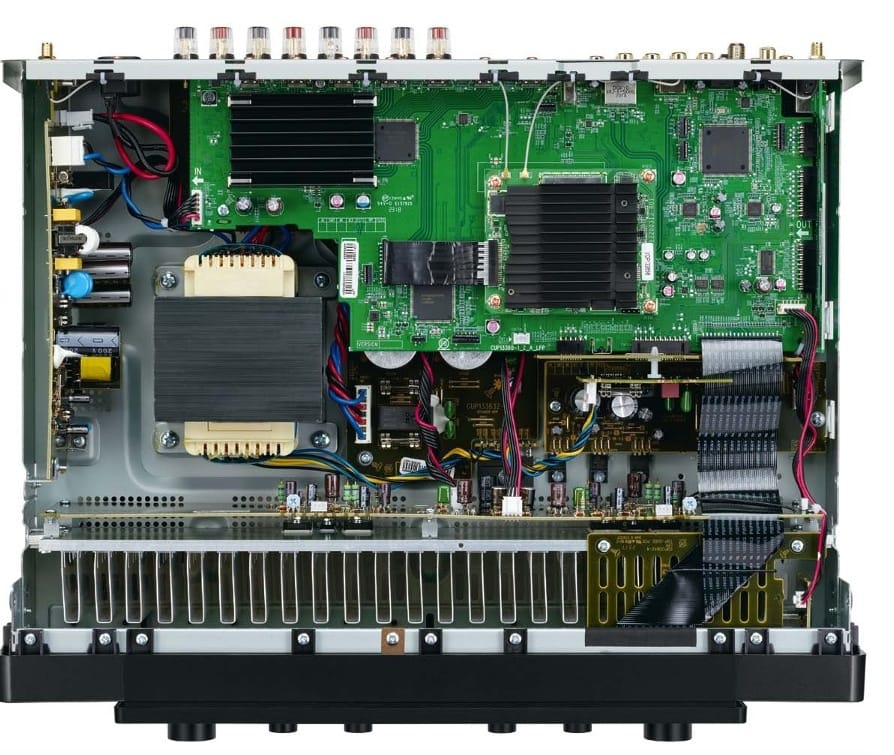
The Marantz Stereo 70s is designed for two-channel playback, so it doesn’t support multichannel codecs like Dolby Atmos or DTS:X. However, it does handle Dolby Vision HDR for video optimization and includes important gaming features like ALLM (Auto Low Latency Mode), ensuring that console games are displayed with minimal delay.

It’s important to note that smart speakers lack these key features, like the six HDMI inputs, which brings us to a preliminary conclusion.
Better with AirPlay
Now let’s talk about real-world use: Setting up via a PC monitor was, as mentioned, a breeze. However, the HEOS app was less enjoyable. Its user interface isn’t particularly well-designed, and it didn’t work reliably with the writer’s iPhone. Some music tracks just wouldn’t start. Additionally, the author missed Qobuz, so they switched to AirPlay 2 with a sample rate limit of 48 kHz. While this isn’t high-res, it proved to be practical and surprisingly good-sounding in the listening test.
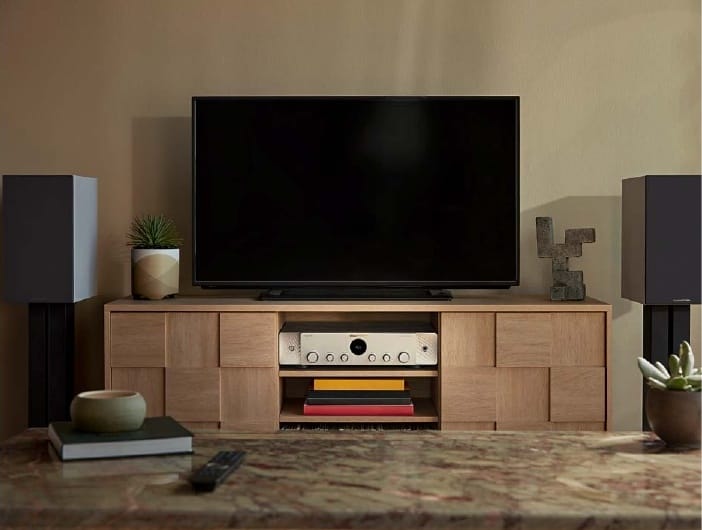
People who opt for the Stereo 70s are not interested in complicated surround sound. They want better sound for TV, movies, and games. They have multiple HDMI sources, such as a PlayStation, Xbox, Apple TV, or Blu-ray player. While many in this situation might choose a soundbar, music lovers who want true stereo sound wouldn’t be satisfied with a single-speaker solution – especially if they want to listen to music seriously in addition to watching TV.

This is where the Marantz shines with its powerful, warm sound, free from harshness or tonal issues. No matter what music genre was played, it consistently delivered clean sound, although it focused more on harmony, power, and cohesion than on ultimate transparency, high-frequency resolution, or bass definition. That’s good, as its goal is to reproduce a wide range of music and film sounds harmoniously. This pleasant character was evident with both bookshelf speakers and premium floor-standing speakers. Only the MM input lagged slightly in quality. Although it was tonally flawless, its dynamic range felt a bit restrained, making it less engaging.
Performance Report
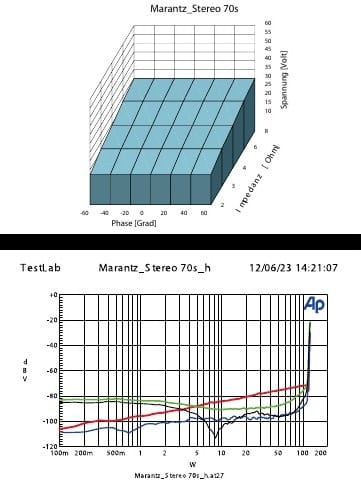
Good signal-to-noise ratio of 105/104 dB (Analog/Digital, at 10 V) with low distortion (THD+N 0.01% at 1 W). At low output levels, the signal mainly contains odd-order distortion. Phono section with unremarkable measurements: 36 dB gain against line, input capacitance 47 kΩ/240 pF, SNR 76 dB with standard system.
Headphone output drives most models sub-optimally due to the high output impedance (470 Ω). Power output per channel, sine wave 8/4 Ω: 90/120 W. Music power at 8/6/4/3/2 Ω: 110/125/145/150/144 W. Stable performance under complex loads. Power consumption: Standby 0.1 W; Operation
Power consumption: Standby 0.1 W; Operation (idle) 20 W; 2×1 W: 73 W; Maximum 520 W.
Marantz Stereo 70s Tech Specs
- Website: www.marantz.com
- Warranty: 5 years
- Dimensions (W x H x D): 44.2 x 10.9 x 37.5 cm
- Weight: 8.4 kg
Connections
- Phono MM/MC: Yes/No
- High-level RCA/XLR: Yes/No
- Digital In (Optical, Coax, USB): Yes/Yes/No
- Tape Out: No
- Pre-Out Cinch/XLR: Yes/No
- Headphone: Yes
Features
- Remote Control: Yes
- Tone Controls (Switchable): Yes/No
- Loudness: No
- Special Features: Front OLED Display
Verdict
Marantz is known for packing a lot of technology and power into compact cases. The brand often succeeds in combining affordable two-channel components with the feature set of home theater receivers. The Stereo 70s is a very elegant bridge between these two worlds.
- Sound: 9/10
- Features: 10/10
- Operation: 9/10
- Build Quality: 10/10
Audio Benchmark
- Overall Rating: 9/10
- Price/Performance: Excellent
When you purchase through links on our site, I may earn an affiliate commission. Here’s how it works.











